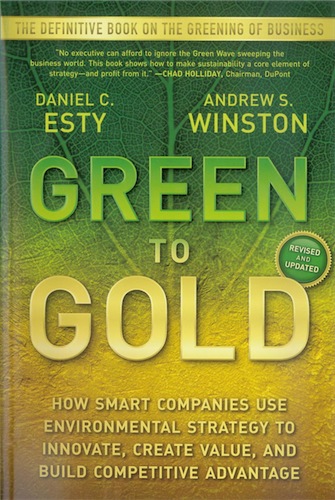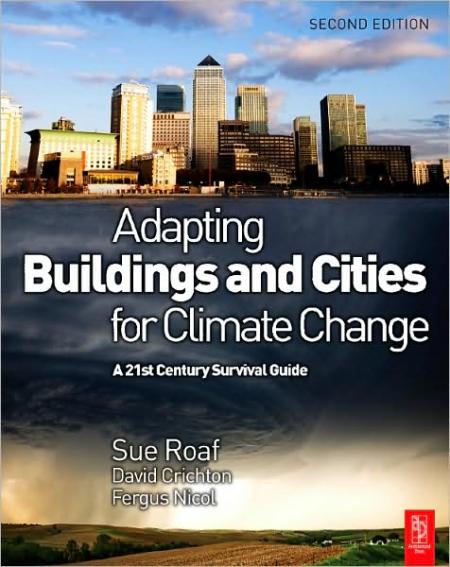A Review of Current Books on Sustainable Issues
Green Metropolis: Why Living Smaller, Living Closer, and Driving Less Are the Keys to Sustainability (David Owen, Riverhead Books, New York, 2009), hardcover, 357 pages, $25.95
This book by American journalist David Owen is a quintessential must read for everybody interested in a more sustainable way of life. Generally Green Metropolis is a plea for living in cities as their compactness ultimately leads to many environmental benefits over the often idealized concept of living remotely outside of cities and in pseudo harmony with nature. Owen’s main argument is that city populations have inherently smaller energy and carbon footprints, since shorter distances for commuting to work and for leisure require less driving, and since living in stacked and rather small apartments is more energy efficient than living in big suburban homes. Touching on many aspects of everyday life and also focusing on architecture, urban planning, and questions of mobility, the author designs a blueprint for sustainable living that as brilliantly as it is merciless exposes many eco-myths and features diametrical positions to generally accepted sustainable beliefs: a true, much needed challenge to conventional thinking.
– Highly recommended.
—
Our Choice: A Plan to Solve the Climate Crisis (Al Gore, Rondale Press, New York, 2009), paperback, 416 pages, $26.99
Sequel to the award-winning documentary “An Inconvenient Truth”, the newest book of Nobel laureate Al Gore is not only a detailed, well-illustrated compendium of causes and effects of climate change, it also features current and future alternative energy technologies and most importantly offers detailed solutions for the current problems at hand. Although not always quite able to escape his political past and language, Gore manages to balance the book between the amplitude of two currents: the desperation over the current lack of action in the face of dire climate consequences and the elevating hope of being able to retool our current life and economy using knowledge we already possess.
– Recommended.
—
Green to Gold: How Smart Companies Use Environmental Strategy to Innovate, Create Value, and Build Competitive Advantage (Daniel Esty/Andrew Winston, John Wiley & Sons, Hoboken, 2009), paperback, $19.95
Slowly but surely companies learn to understand that sustainable practices must not impede economic growth, but can actually yield competitive advantage and financial gain. Green to Gold lays out how business can fair well in an increasingly environmentally sensible market, and how companies can create what Esty and Winston coin “Eco-Advantage:” drawing positive economic impulses and strengthened PR by looking at business through an environmental lens. The authors outline general strategies, tools, and plans to reduce costs and risks of sustainable practices and drive revenues and overall value. The book features numerous case studies of companies of varying sizes that in many areas of their operations have discovered the positive financial side effects of actual sustainable measures or the striving for better efficiencies.
– Recommended.
—
The Clean Tech Revolution: The Next Big Growth and Investment Opportunity (Ron Pernick/Clint Wilder, HarperCollins Publishers, New York, 2007), hardcover, 308 pages, $12.99
This book understands the current focus on sustainable technologies as the start of a new industrial revolution. It systematically explains and records all current technologies that contribute to a shrinking carbon footprint (including solar energy, wind power, the smart grid, biofuels, and also sustainable architecture among others), evaluates their current technological status quo, market situation and future potential and relates these findings to general investment opportunities. The book furthermore introduces individual companies that show promising use of innovative technologies, have hidden potential or are market leaders in their field. The Clean Tech Revolution is written in a crisp and informative way and provides a great overview of many technological, economical, social, and political aspects involved in the still growing field of “clean tech” companies.
– Recommended
—
Adapting Buildings and Cities for Climate Change: A 21st Century Survival Guide (Sue Roaf/David Crichton/Fergus Nicol, Architectural Press, Oxford, UK, 2009), paperback, 385 pages, $57.95
Unfortunately the content of this book has nothing to do with its title. This book is not about adapting buildings and cities; it is a one-sided, narrow-minded treatise of causes and effects of climate change. More than half of the book covers the future consequences of climate change, from changing temperatures, sea levels, and precipitation patterns, to the climate’s impact on living conditions of populations and the built environment. The book continues to romanticize traditional building typologies in developing nations like Pakistan in terms of their thermal comfort and praises the absence of air-conditioning as a model to follow or at least learn from. It condemns high-profile architects, cities and high-rises in general as places of immense energy waste, and attacks modernism as the architectural epoch that for the five authors represents a step back in terms of a sustainable approach to architecture. Loaded with quotes and references the authors try to give their book credibility; nevertheless, regrettably a lot of the information is simply too biased and lopsided for establishing a sincere research effort that could be taken seriously. While the book is quick at assigning blame and pointing out our current lack of sensibility and action, it does not deliver concrete advise on designing buildings and cities. Its final, very brief chapter that at last addresses what according to the book’s title should have been a much more important section, is confined to a very general, abstract language. With often uncoordinated or doubled information between authors and graphically poorly designed, it is books like this one that in their lecturing and morally oppressing attitude create resistance to the urgent need of dealing with climate change and the transformation necessary in the design profession; it therefore pathetically fails its most important purpose – to actually do the opposite: inspire and propel along a path to more sustainable design.
– Aggravating.




